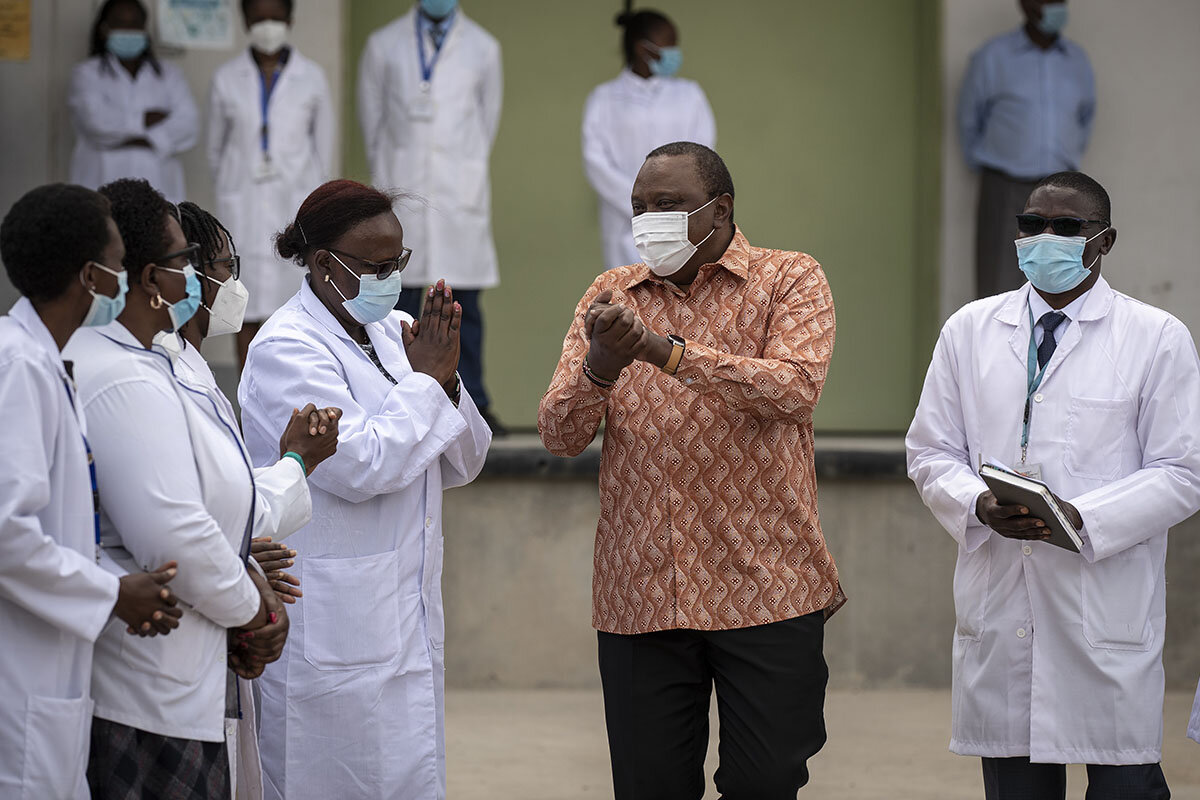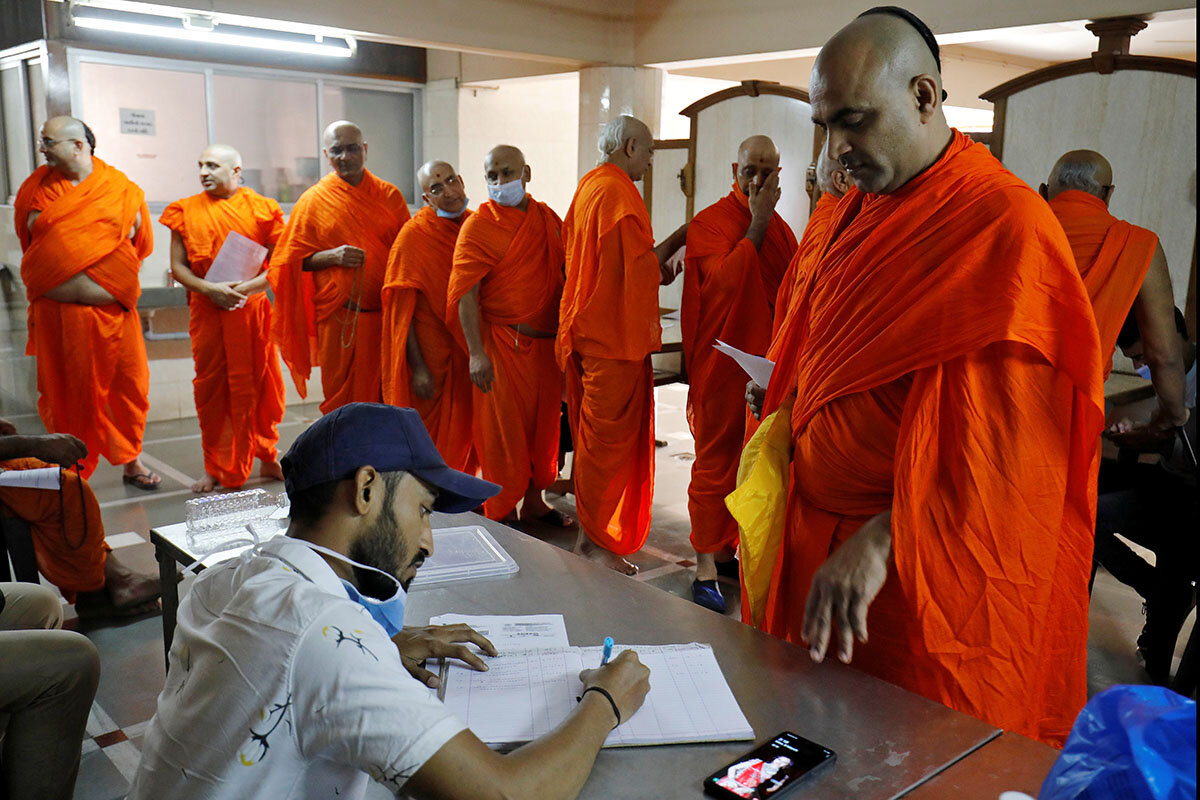Vaccine diplomacy: Will free shipments pay off for India?
Loading...
| New Delhi
India, home to nearly 1.4 billion people, is in the midst of a massive, countrywide COVID-19 vaccine drive. But no sooner had New Delhi begun to administer vaccines to its own citizens, back in January, than it began sending millions of free doses around the world.
The neighboring Himalayan kingdom of Bhutan was the first to receive Vaccine Maitri (Vaccine Friendship) shipments of AstraZeneca vaccines, followed by Nepal, Bangladesh, the Maldives, Myanmar – and Dominica, where the Caribbean island’s prime minister himself helped unload boxes at the airport.
As of mid-February, just 10 countries had administered 75% of all vaccines, according to the United Nations, securing large supplies for themselves in what has been termed vaccine nationalism. One hundred and thirty countries, meanwhile, had not yet received a single dose – a trajectory the U.N. secretary-general called “wildly uneven and unfair.”
Why We Wrote This
Home to a massive vaccine industry, India sees an opportunity to expand its leadership among countries feeling left behind, as others stockpile for themselves. It may be generous, but it’s also a boost for New Delhi’s goals.
One, a global nonprofit that combats extreme poverty and preventable disease, has estimated that the United States is likely to have a surplus of 453 million doses even if it vaccinates 100% of its population.
Experts say India sees the power vacuum around vaccines as an opportunity for diplomacy and soft power, in line with Prime Minister Narendra Modi’s bid to raise India’s international profile. Next door, Beijing has also pushed vaccine diplomacy, but India’s industry strength, which is producing vaccines faster than they are currently being distributed at home, may give it an edge.
“From the very beginning of the pandemic, the Indian government seemed to be projecting itself as a responsible global stakeholder ... as an important part of global governance and the global health scenario,” an image supported by India’s strength in the sector, says Harsh Pant, professor of international relations at King’s College, London.
As of late February, India had exported about 36 million doses of vaccine across the world, about 20% of them as grant assistance. Meanwhile, it has launched the second wave of its domestic campaign, aiming to vaccinate 300 million of its 1.3 billion people by mid-summer.
Two giants
Even before the pandemic, India was a major pharmaceutical hub, and manufactured about half of all vaccines sold globally. Now, the privately-owned Serum Institute of India (SII), the world’s biggest vaccine manufacturer, has been producing 2.4 million doses of the AstraZeneca vaccine a day, more than it can distribute domestically.
SII vaccines make up a large contribution of the World Health Organization’s COVAX initiative, which aims to make vaccines accessible for lower- and middle-income countries. The first shipment under the initiative was sent from India to Ghana late last month.
India’s vaccine diplomacy isn’t surprising. It is in line with the Modi government’s strategic use of soft power to aid diplomacy and foreign policy. Since his election in 2014, Mr. Modi has successfully proposed an “International Day of Yoga” to the United Nations, visited 58 countries, and reached out to the Indian diaspora, especially in the United States.
But India is not alone in dominating vaccine diplomacy. There’s also China, which long promised several southeast Asian and African countries its homegrown vaccines and has been sending its own shipments across the world. For years now, China has made large investments in countries in India’s neighborhood, like Nepal, the Maldives, and Sri Lanka, that India has been unable to match. At the same time, India’s ties with Nepal – bordered by both India and China – have seen a setback, and disputes continue over India and China’s ill-defined borders along the Himalayan regions.
“Competition between China and India is now a permanent feature of international politics,” says Jabin Jacob, an associate professor of international relations at Shiv Nadar University outside New Delhi. “There is certainly an element of competition between the two countries to show themselves as leaders in Asia.”
“Both countries see themselves as offering models of political and economic development distinct from the West, the Chinese more so than the Indians,” Professor Jacob says. But India sees itself as an alternative to both “Western democracy and Chinese authoritarianism,” he adds.
This time, India seems to have an advantage. The lack of transparency and efficacy data regarding China’s vaccines has made many abroad wary. Some countries, like Sri Lanka, have rejected the Chinese vaccine made by Sinopharm and purchased vaccines from India instead.
Professor Pant says he’s “skeptical” whether vaccine diplomacy can be a “game changer” for India’s relations in the region. “Smaller states in India’s neighborhood will always try to balance India against China over the long term, and that’s to their advantage,” he says. “But I think in the short term it certainly changes the perception of India being a bully.”
Risks at home
Some analysts argue vaccine diplomacy is a luxury that New Delhi is undertaking at the cost of its own citizens’ well-being. India has the second-highest number of COVID-19 cases globally, preceded only by the United States, and pandemic restrictions caused the economy to fall into a recession for the first time in nearly a quarter century. Meanwhile, India’s own vaccine drive has not been up to speed.
New Delhi is taking “considerable political risk domestically” by sending so many vaccines abroad, says Oommen Kurian, head of public health initiatives at the Delhi-based think tank Observer Research Foundation. But he argues that, as a large country with an underfunded health system, India’s rollout at home needed to be slow, and could not match the pace of production, at least initially.
India’s vaccine outreach coincides with months of negative press abroad, amid a historic farmer protest against three hastily enacted agricultural laws. One critic was Canadian Prime Minister Justin Trudeau, who last December expressed concern over the use of force on protesters. His comments drew sharp reactions from India, where the Foreign Ministry called his remarks “ill-informed” and lodged a formal protest.
But in February, as Canada faced shortages in supplies from Pfizer and Moderna, it reached out to India to request vaccines manufactured by SII. Mr. Modi tweeted about receiving a call from “my friend” Mr. Trudeau and assuring him that India would do its best to facilitate vaccines. Afterward, an Indian ministry spokesperson told reporters that the Canadian prime minister had “commended” India’s efforts to “choose the path of dialogue” with protesters. About 500,000 doses of the vaccine arrived in Canada last week.
In the big picture, though, “it’s important not to overplay the long-term effects of vaccine diplomacy,” Professor Jacob says. “Once the pandemic is past, more traditional factors of power are likely to return to center stage, which means India will still have a lot of catching up to do with the West and China.”







